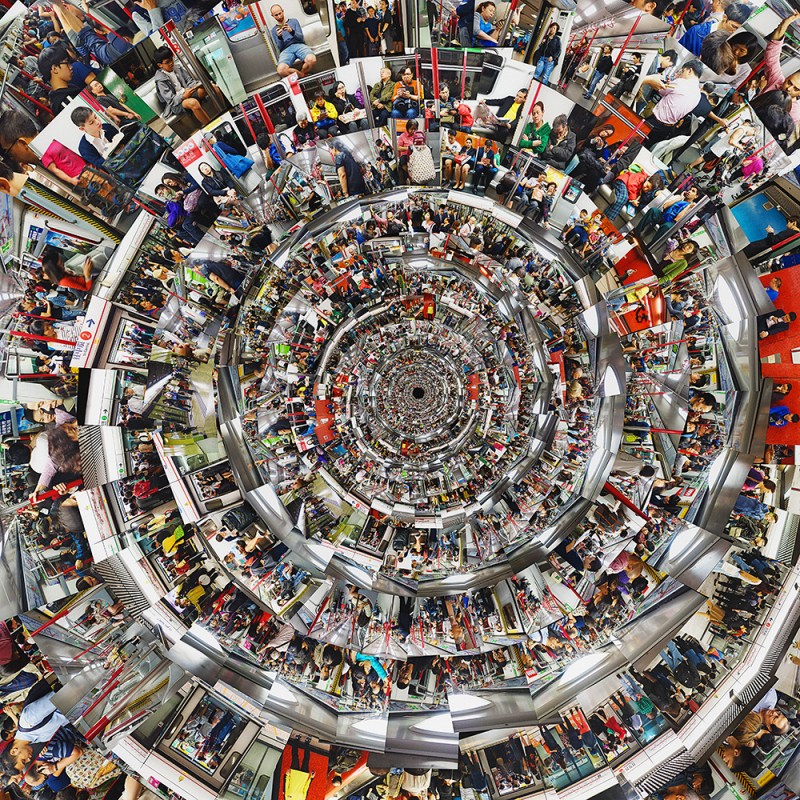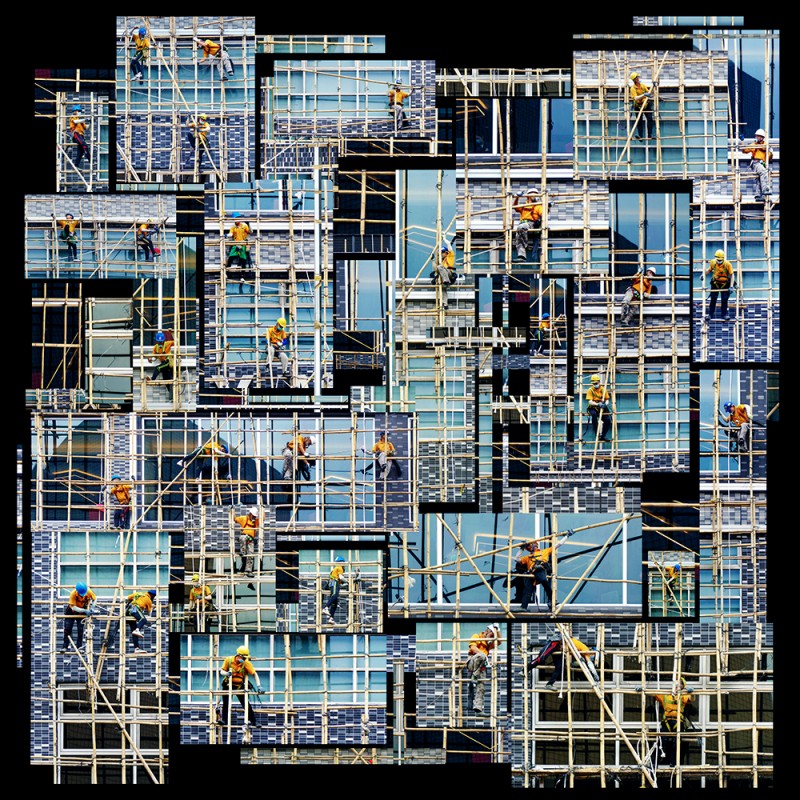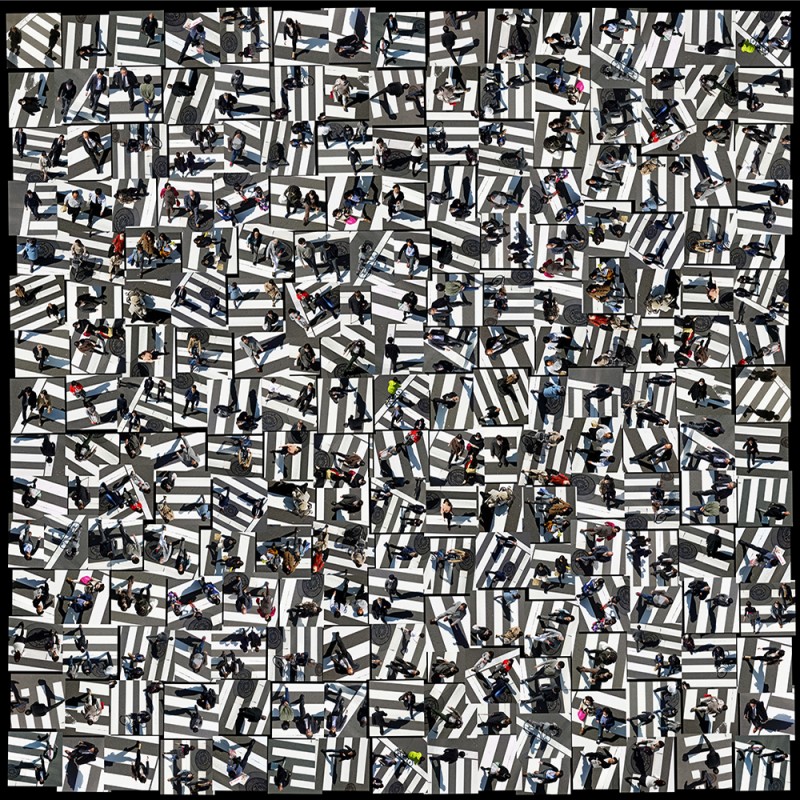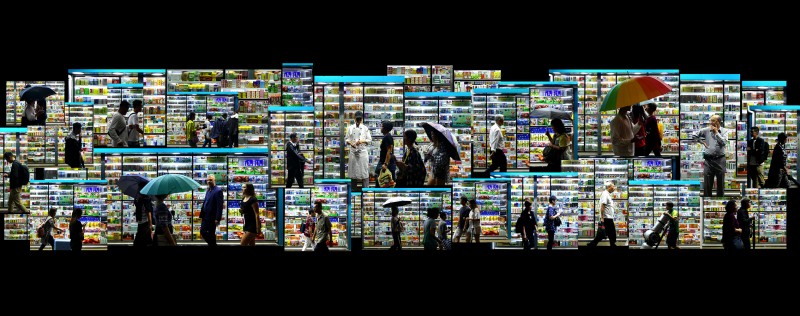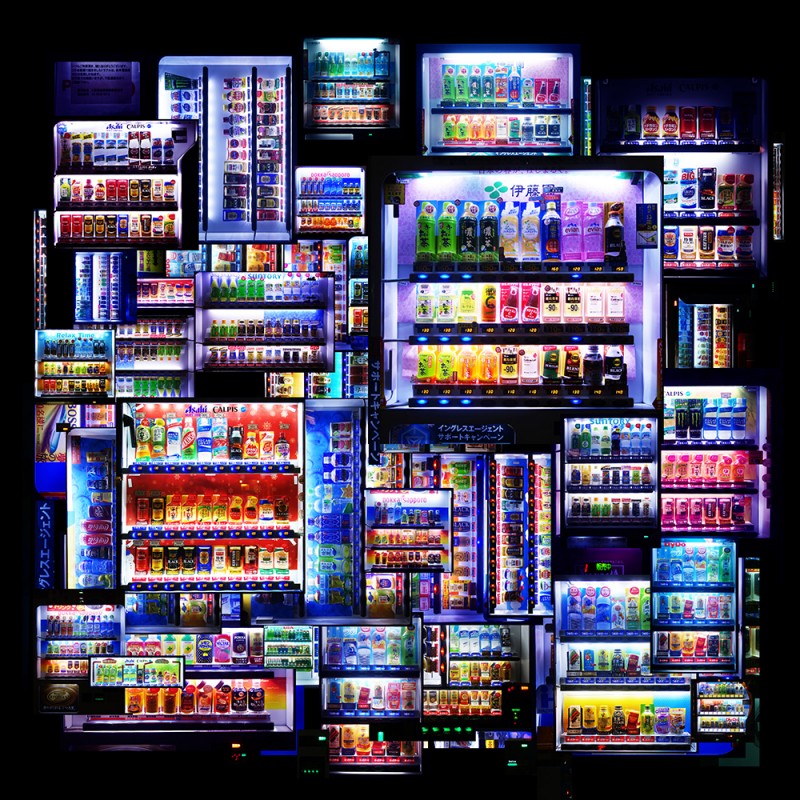Urban-Tapestry
Urban-Tapestry
Wing Chan
March 28, 2023

LFI: Your series forces the viewer to pause, because your images cannot be grasped with just one glance…
Wing Chan: I grew up in Hong Kong and spent many years in New York. Both cities are backdrops of the kind of hustle and bustle of city life. The pace is fast in city living. My photomontage series invites the viewer to pause, to look at our lives and the things around us with a different perspective and appreciate what is around us… Typical of urban life is rushing from one place to another. There may be many people living in the city, and yet there is certain loneliness often found along side that hectic pace.
How many “parts” does the collage with the most pictures have?
Of all my photomontages, the one with the most photos has about 250 selected images. I took them in various subway stations and on trains in Hong Kong. My idea was to show the daily life of subway passengers. I captured their activities, such as the student who did his homework while riding the train. Many passengers were reading or playing with their mobile phones. And some closed their eyes and took a short break from their hectic and exhausting lives.
What camera did you use? What was it important for in your process?
I use a Leica V-Lux as my camera. It can zoom without changing lenses, and I can take a few photos consecutively. I take many street photos, and I can operate the lens’ zoom function even when recording motion pictures. It is light enough to carry it around, so that I’m ready to shoot at almost anytime. To me, my camera is really like a second pair of eyes. I see things that other people hurry past, ignoring aspects of city life that are part of its fabric.
What exactly does your photographic/technical process look like?
First of all, I pick a subject which moves me emotionally. I will spend hours or days in certain locations, waiting to photograph and capture a particular subject. Then I will create a folder on my computer, review and select the images. I will fine-tune each image without over doing it. Once I have all the ingredients, I will use my computer as a canvas to create my photomontage. As a rule of thumb, it’s always good to reduce from a large image file to a small usable image. I never expect to get the photomontage done in a day; sometimes it’s good to take a look at the photomontage the next day, with a fresh pair of eyes. It’s important to enjoy the creative process. I put on music which I like, from classic to pop or jazz, depending on what suits my mood.
Wing Chan+-
Born in Hong Kong, Wing Chan left for the United States when he was 18 and had a career in commercial design in New York City. In 2011 he relocated to rediscover his roots in Hong Kong. His photography and photomontages focuses on and is inspired by the wealth of subject matter he discovered in various world cities. Wing has held exhibitions of his photomontage work in Paris, Seoul, Tokyo, New York, Hong Kong, Amsterdam, and Bangkok and other cities. More

